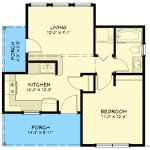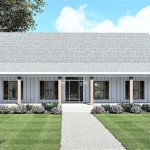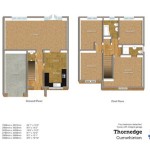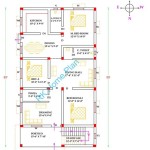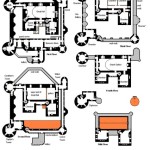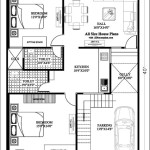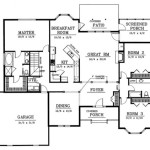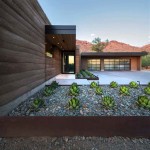Charleston SC Style Home Plans: An Exploration of Architectural Elegance
Charleston, South Carolina, boasts a unique architectural heritage that reflects its rich history and coastal environment. Charleston style home plans capture the distinctive features of this architectural tradition, offering a blend of elegance, functionality, and resilience. These plans evoke a sense of southern charm while incorporating practical design elements suitable for modern living.
Understanding the core elements that define Charleston style architecture is essential for appreciating and implementing these home plans effectively. This architectural style developed over centuries, adapting to various influences and incorporating practical considerations for the climate and lifestyle of the region. The following sections will delve into the historical context, defining characteristics, and modern interpretations of Charleston style home plans.
Historical Foundations of Charleston Architecture
The architectural style now recognized as “Charleston style” evolved gradually, influenced by English, Caribbean, and even African building traditions. The city's early settlers, primarily from England, brought their architectural preferences, which were then adapted to suit the local climate and available materials. The influence of Caribbean design stemmed from the economic and social connections between Charleston and the West Indies, particularly Barbados.
One significant influence was the prevalence of narrow lots. Charleston developed as a port city, and land within the city limits was at a premium. This led to the development of the "single house," a narrow, rectangular dwelling oriented perpendicular to the street. This orientation maximized ventilation and privacy. The narrow side facing the street usually features a doorway and windows, while a long piazza (porch) extends along the side of the house, providing a sheltered outdoor living space.
The mid-18th century saw the emergence of Georgian and Federal architectural styles, which contributed to the refinement of Charleston architecture. Symmetry, proportion, and classical detailing became increasingly important. Brick and stucco were commonly used as building materials, and decorative elements such as cornices, pediments, and window surrounds added a touch of elegance. The use of high ceilings and large windows also became characteristic features, enhancing ventilation and natural light.
Defining Characteristics of Charleston Style Homes
Charleston style homes possess a combination of distinct characteristics that distinguish them from other architectural styles. Recognizing these elements is crucial for selecting a Charleston style home plan or incorporating these features into an existing structure.
One of the most recognizable features is the aforementioned "single house" design. This involves a narrow façade facing the street, often with a side piazza running the length of the house. The piazza serves as an essential outdoor living space, providing shade and ventilation during the hot and humid summers. The positioning of the piazza usually faces south or west to capture breezes and offers a more private outdoor experience.
Another defining characteristic is the emphasis on verticality. High ceilings, tall windows, and multiple stories are common. This vertical emphasis enhances ventilation and creates a sense of spaciousness, even in relatively narrow homes. Tall windows also maximize natural light, contributing to a brighter and more airy interior.
Building materials commonly used in Charleston style homes include brick, stucco, and wood. Brick is often used for the foundation and lower levels, providing durability and a sense of solidity. Stucco is frequently applied to exterior walls, offering a smooth, elegant finish. Wood is used for siding, trim, and the construction of piazzas, adding warmth and character to the overall design.
Architectural details play a significant role in defining the Charleston style. These details often include decorative cornices, elaborate window surrounds, and refined moldings. Shutters are also a common feature, providing protection from the elements and adding visual interest. The use of wrought iron railings and gates further enhances the aesthetic appeal.
Color palettes typically feature muted, earthy tones, reflecting the natural surroundings of the Lowcountry. White, beige, and gray are commonly used for exterior walls, while accents of color can be incorporated through shutters, doors, and trim. These color choices contribute to the overall sense of understated elegance and timeless appeal.
Modern Interpretations and Adaptations
While traditional Charleston style homes remain popular, modern interpretations of this architectural style have emerged, incorporating contemporary design elements and adapting to the needs of modern homeowners. These adaptations often involve integrating open floor plans, updated amenities, and sustainable building practices while preserving the essence of the Charleston aesthetic.
One common adaptation involves the integration of open floor plans. While traditional Charleston homes often featured distinct rooms and compartmentalized spaces, modern plans may incorporate larger, more open living areas that facilitate social interaction and create a greater sense of spaciousness. This can involve combining the living room, dining room, and kitchen into a single, unified space.
Modern Charleston style home plans also frequently incorporate updated amenities and technologies. This can include energy-efficient windows and insulation, smart home automation systems, and state-of-the-art kitchen appliances. These features enhance the comfort and convenience of modern living without compromising the architectural integrity of the home.
Sustainable building practices are becoming increasingly important in Charleston style architecture. This can involve using locally sourced materials, incorporating passive solar design principles, and implementing water conservation measures. These sustainable practices help to reduce the environmental impact of the home and enhance its long-term durability.
The use of outdoor spaces continues to be a crucial element in modern Charleston style homes. In addition to the traditional piazza, modern plans may incorporate outdoor kitchens, patios, and gardens, extending the living space beyond the confines of the interior. These outdoor spaces provide opportunities for relaxation, entertainment, and connection with nature.
The incorporation of modern materials and finishes can also enhance the aesthetic appeal of Charleston style homes. This can involve using durable and low-maintenance materials for exterior siding, roofing, and decking. The use of contemporary lighting fixtures and hardware can also add a touch of modern elegance to the overall design. While maintaining respect for the historical style, these modern elements allow for personalization and customization, catering to the preferences of individual homeowners.
Ultimately, Charleston SC style home plans offer a timeless and elegant approach to residential design. By understanding the historical foundations, defining characteristics, and modern interpretations of this architectural style, homeowners can create a living space that reflects the charm and sophistication of the South Carolina Lowcountry while meeting the demands of contemporary living. The enduring appeal of Charleston architecture lies in its ability to blend tradition with innovation, creating homes that are both beautiful and functional.

Finding Joy Charleston House Plans Vacation Architectural Floor

Charleston Style House Plans Coastal From Home

Charming Charleston Style Houses In Rosemary Beach

Coastal Retreat Spacious 3044 Sqft House Plan

Charleston House Plans

4 Bedroom 3 Bath Coastal House Plan Alp 0363 Houseplan Com

Charleston Style Homes House Plans Empire Properties

Charleston House Plans

Charleston Style House Plans Page 4 Of 19 Coastal From Home

Home Plan Carrington Sater Design Collection

